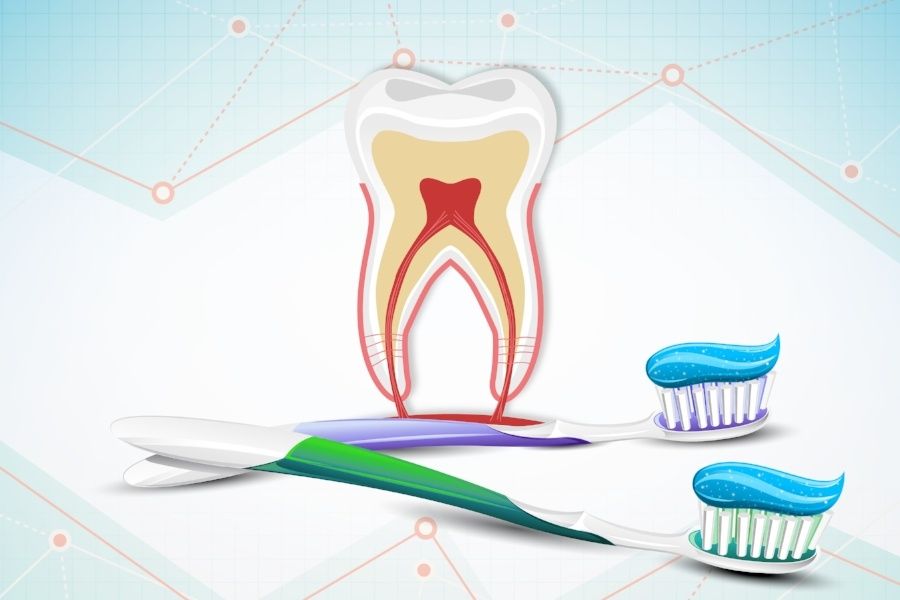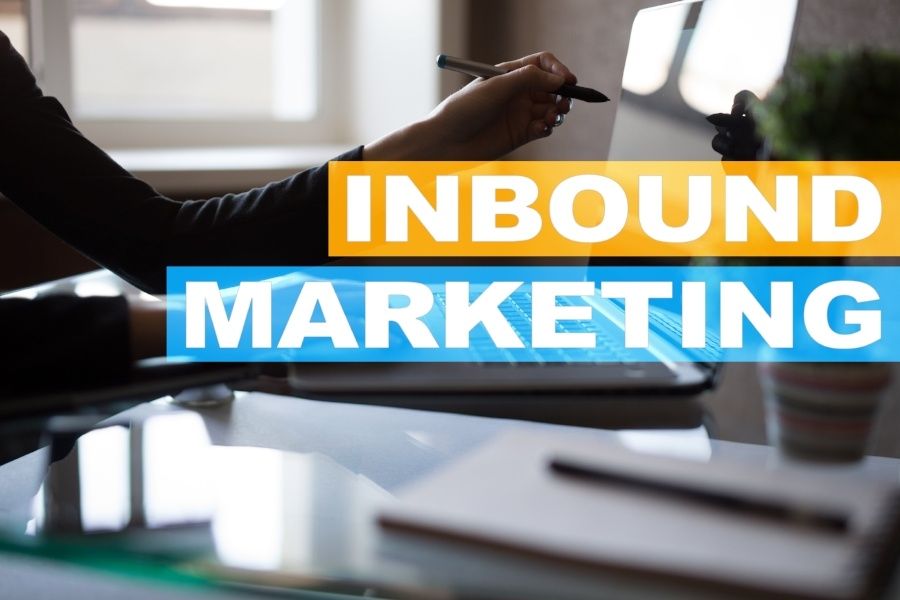
As healthcare professionals, you know how competitive the industry can be. In larger cities, patients may have dozens or even hundreds of different options available to them. Standing out as a dental practice is tough, so you constantly have to innovate to find ways to bring new patients through your doors.
Traditional marketing methods like taking out a print ad in your local paper or paying for a billboard placement can still be useful tools in your broader marketing strategy, although they are unlikely to be your bread-and-butter in today’s digital age.
Practices that embrace digital marketing are able to get their name out more reliably, attract more clients, and grow their standing within their community.
At RiseFuel, we firmly believe that the best strategy for dental practice marketing lies in inbound marketing. Inbound marketing is a relatively new arrival in the world of digital marketing, focusing on attracting new patients organically, rather than taking out traditional ads.
To explain why inbound marketing for dentists is so effective, we first have to dive into what inbound marketing is and explain how it works.
What is Inbound Marketing?
Source: Vital Design
In the context of a healthcare practice, inbound marketing is the process of attracting new patients to your practice through organic conversations and the creation of content that your audience will find useful.
Compared to traditional advertisements, inbound marketing is much more of a conversation between your practice and prospects, which builds sturdier foundations for long-term relationships.
Inbound marketing focuses on attracting customers through helpful content, positioning your company as not just a dental practice, but an authority on dental issues within your community. Unlike traditional outbound marketing, you are not fighting to capture the attention of each customer through ads.
Instead, you are earning their attention organically, by creating content that addresses the problems and questions of your ideal customers.
The idea is to entice your ideal customers to come to you organically, as you build trust with them and positioned your company as an authority.
An inbound marketing campaign starts by taking a good, hard look at your ideal customers. Who are they? What do they do for a living?
What concerns them most when it comes to choosing a dental care provider? The customer profiles that come out of this brainstorming session are known as buyer personas.
According to PatientNews, women drive over 90 percent of all healthcare buying decisions in American families, so most inbound campaigns will be specifically crafted for women and the concerns that they have about dental health.
Once you have your buyer personas mapped out, you should have a good idea of what is important to each of your different customer types. Then you create high-value content around those immediate concerns.
What are the most common questions that your customers ask? What kind of information do your patient’s typically seek out about the different services and procedures that you offer?
By crafting content around their most pressing questions, you position your dental practice as an authority in your industry, and someone that your customers can come to for answers.
Not only that, but those articles, videos, and other media that you create around these questions will, over time, reach new audiences that you would never reach through traditional advertising.
Patients will find you through multiple digital channels, including internet search engines, social media, and word-of-mouth among friends.
How Does Dental Patient Inbound Marketing Drive Traffic?
Ultimately, the goal of inbound marketing is to drive traffic to your website and convince people to choose you as their dental healthcare provider.
There are several digital channels that inbound marketing utilizes to drive traffic to your website:
Search Engine Optimization (SEO)
The process of optimizing your website and content that you publish for search engines.
By creating researched content around targeted search keywords that your customers search for in Google and other search engines, you can rank highly for those keywords and drive highly-targeted customers to your website. SEO plays a critical role in the long-term strategy of any inbound marketing campaign.
Blogging
While the articles that you publish on your blog are optimized for SEO, maintaining a consistent flow of high-value content makes your business blog a destination for customers that are seeking information about your practice or industry.
By maintaining a consistent publishing schedule with high-value content, potential clients will seek out your blog whenever they have pressing questions. Your blog can become a hub for answers that your prospects and clients have about dental health.
Social Media
Social media plays a key role in the inbound marketing process. Not only should you use social media as a way to distribute your content and get it in front of your ideal customers, but social media provides the most direct way to engage in conversations with that audience.
Social media conversations are the best way for companies to build a loyal following and interact with them on a regular basis. Use social media to give your audience a real behind-the-scenes look at your practice. Let them build familiarity with a company and the people that work within it.
Pay-Per-Click (PPC) Marketing)
Although PPC marketing typically falls under the more traditional, outbound/interruption style of marketing, it does also play a key role in your inbound marketing campaigns.
In PPC marketing, you show your advertisement to a group of people but are only required to pay when someone actually clicks on your ad. If they don’t click, you don’t have to pay a cent.
PPC can be used to distribute your content and get it in front of your intended audience. While PPC marketing plays a smaller role in inbound marketing than it does in more broad digital marketing strategies, it is still a very effective distribution channel.
Additionally, PPC provides instantaneous results and can be used to instantly boost traffic to your website. This makes it a popular choice for those that don’t want to wait the weeks or months that it would take to see results through SEO and organic reputation building.
The Four Phases of Inbound Marketing
Source: HubSpot
The inbound marketing methodology is typically broken down into four different phases, representing the journey that a customer takes between discovering your company and being continually delighted as an ongoing client of yours.
Each phase has a different focus, designed to slowly but surely walk the prospect through the process of familiarizing themselves with your company and eventually becoming a customer.
Let’s take a look at the four phases of inbound marketing methodology:
Phase #1: Attract
The process of attracting a client to your website. You don’t want just anyone coming, either. You want to attract your ideal prospective clients to your website. The types of people that are more likely to become leads and customers. A few different inbound pillars play a critical role in the attraction phase.
- Blogging. By creating high-quality content about the type of subjects your ideal customer is interested in learning about, you attract them to your business. In order to get found, you have to create highly educational content that answers the most pressing questions that they have, positioning your company as an authority in your industry.
- SEO and Content Strategy. To get in front of your target audience, you have to show up when and where they search for specific topics whether it is through Google or another social media channel. You have to cover the right topics to have the chance to attract your audience. Inbound marketers use a range of tools to help them define their content strategy and determine what topics are a good fit for their audience.
- Social Media. The most direct way to get in touch with your audience. Inbound marketing relies on high-value content and social channels to help get that content in front of your audience. Engaging with prospects is critical for long-term success.
Once you’ve attracted your audience, then we move to the next phase of inbound strategy.
Phase #2: Convert
Once you’ve attracted people to your website, then you begin the process of converting them to leads and customers.
Dental patient marketing requires that you open a conversation in whatever way works best for them, but you want to make sure that you have all of your bases covered. There are a few popular strategies that are used in this phase to convert visitors into leads:
- Website Forms. To turn a visitor into a lead that you can continue marketing to, you’ll need to capture their information. A website form asking for basic information like their name, email, and phone number is an absolute necessity for the conversion phase of inbound marketing.
- Phone Conversations. Probably the most common form of turning an interested prospect into a customer in dental patient marketing. Hopping on the phone is important for filling your schedule and keeping your seats filled.
- Relationship Management. Many prospective clients won’t be ready to become your patient right away. They may be shopping ahead several months in advance. They might still be making up their mind. Being able to manage these relationships is critical for long-term success in inbound marketing.
Once you’ve converted a prospective client into a lead, then you begin the process of closing them as a client.
Phase #3: Close
You’ve attracted the right people and converted them into leads. Now you begin the process of closing them as a new client of your dental practice. Without closing, dental patient marketing can’t be effective.
A few of the different tasks in the closing phase include:
- Scheduling Treatment. The most essential close point in dental patient marketing. Getting your leads on the phone and scheduling their first treatment in your office. Most are likely to start with a routine cleaning or something small. Although this is handled by receptionists, having a receptionist that is at least minimally trained in phone sales can play a critical role in your ability to close new clients.
- Lead Nurturing. Not all leads are going to be ready to become clients right away. In fact, every lead will need to be nurtured in some way, depending upon their individual needs and readiness to commit. By continuing to deliver high-value content directly to their email inbox, you build your relationship with them over time. They may not be ready to become a client now, but what about four months from now?
Phase #4: Delight
After closing a new customer, then you begin the process of delighting them. In practice, that means providing an exceptional dental service and being personable and enjoyable. In dental patient marketing, that means continuing to deliver high-value content to your customers even after they are a client of yours.
This helps to continue to grow your relationship with new customers while improving your retention rates for old ones.
Inbound a Reliable Strategy for Dental Patient Marketing
Inbound marketing is the best digital marketing strategy for dentists and other healthcare providers. Inbound marketing provides healthcare providers with a reliable digital strategy that builds on itself over time.
It’s stable, unlike returns from a flash-in-the-pan advertising campaign that might be generating new business now, but will have disappeared six months from now. It’s a long-term strategy that positions your practice as an authority and trusted adviser to your most ideal clients.
When it comes to dental patient marketing, you’d be hard-pressed to find a more worthwhile long-term investment than inbound marketing for dentists.














